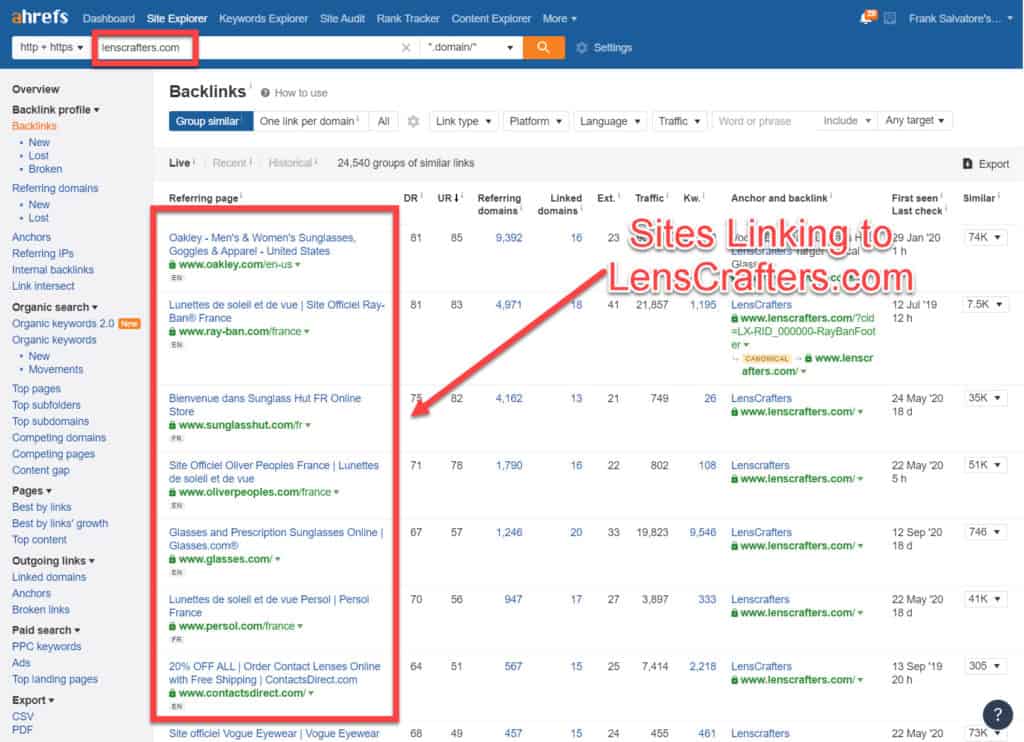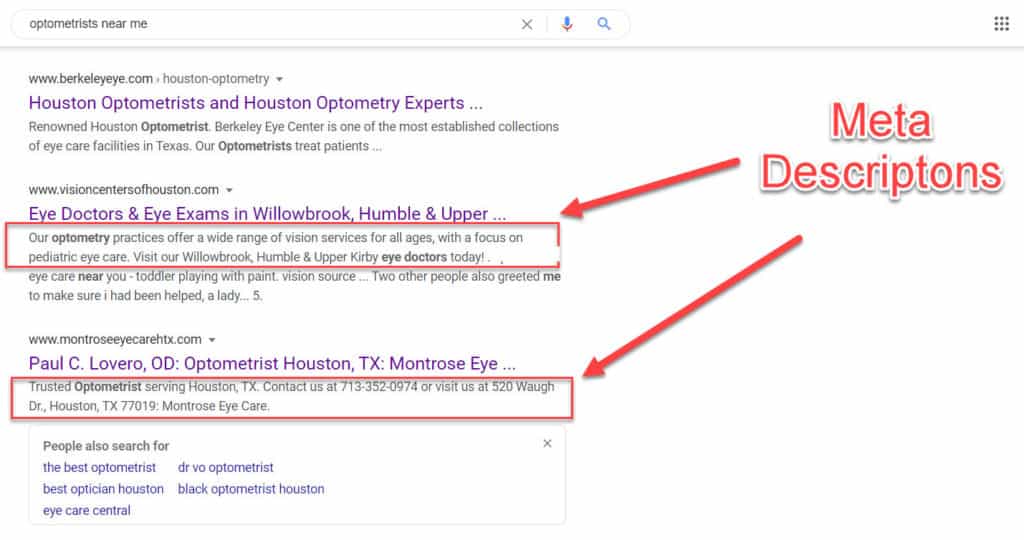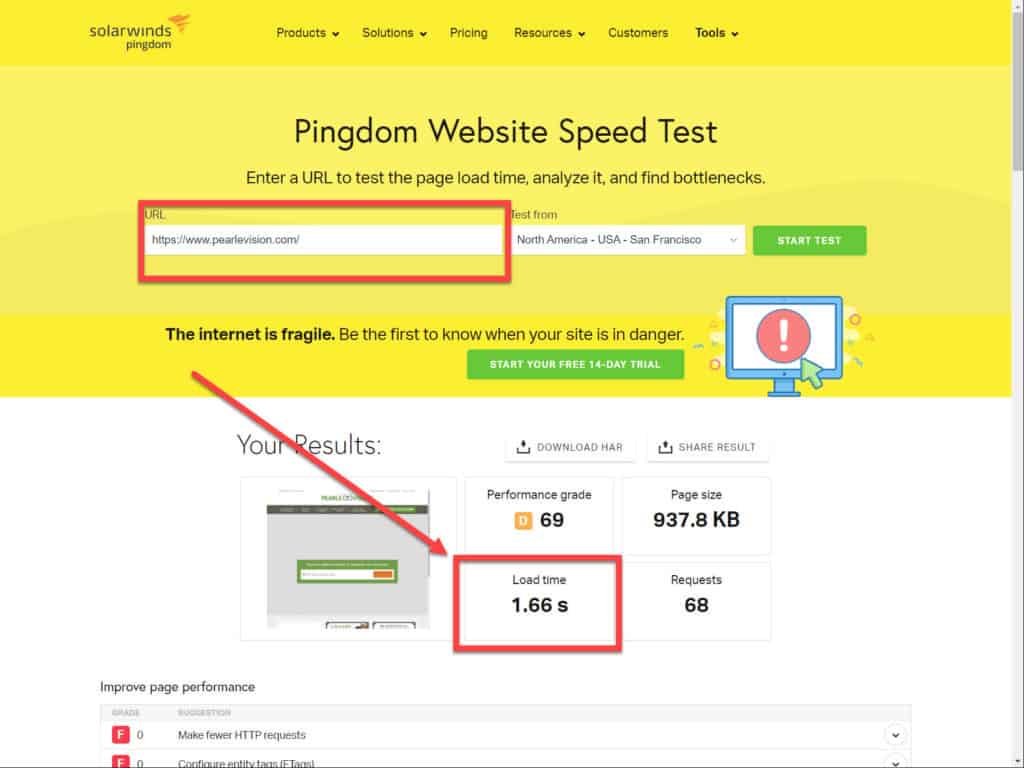Marketing Your Eye Care Services With Effective SEO
If you’re responsible for marketing an eye care practice with a multitude of innovative and life-enhancing services to improve eye health, such as:
- Disease & Injury Detection
- Prescriptions for Eye Glasses & Contact Lenses
- Eye Exams
- Vision Therapy
You may be struggling with how to attract a large pool of potential patients.
Research has shown that approximately 75% of people using a search engine, such as Google, click on the top 5 results that enable those businesses to be the most visible and, conceivably, the most credible in the searcher’s eyes.
A well thought out SEO for Optometrists plan can potentially propel you into the top 5.
What Exactly is Optometry SEO?
SEO, which stands for Search Engine Optimization, is a proven digital marketing strategy that can help your website appear higher in the search results. Optometrist Marketing with SEO can help with reputation management and credibility. It can also increase web traffic and result in many future potential patients contacting you to schedule an appointment.
Unfortunately, SEO isn’t an easy process. Making your optometry website rank higher than other optometrists requires a lot of planning and effort.
We offer optometry SEO for optometrists as part of our optometry marketing services.
So How Do I Increase the Ranking for my Optometrist Website?
There are four essential considerations for optometrist SEO when it comes to implementing an effective optometry SEO strategy:
- Keyword Research
- Backlinks
- Citations
- Your Website
Each of these is described in depth below.
1) Keyword Research for Optometrists
Do you know how new patients search for your service offerings on Google?
Is someone more likely to search for “Amblyopia treatment” or “Fix Lazy-Eye”?
Are they going to search for “Pediatric optometrist” or “Kid’s Eye Doctor”?
Effective Marketing of your eye care center requires that you know what your prospects are searching for. These tools will help you to find your ideal SEO keywords.
SEO experts use keyword research to focus on what people search for in Google and other search engines. A “keyword” is a phrase consisting of one or more words. The closer the terms on your website match the search – and the user’s intent, the more likely your eye care practice will rank higher in the search engines.
Optometrists’ goal is to increase awareness of your products and services by having your eye care practice appear higher in Google search rankings, ultimately attracting a specific target audience to your optometry practice.
SEO Keyword Research Tools
There are many free and paid marketing tools that you can use to give you a good idea of what prospective new patients may be searching for.
Three SEO tools to consider are Ubersuggest (free to try), KWFinder (by Mangools) and ahrefs.
Ubersuggest is a free online SEO tool that can provide keyword suggestions, ideas for new website content for optometrists, and marketing strategies that perhaps have worked well for your competitors.
ahrefs is a paid SEO tool that provides great detail about your optometrist website – and practice websites that compete with you – so that you can create content that people want to read. ahrefs also provides information about what websites are linking to you and your competitors. As we will discuss in a moment, backlinks are an essential factor for SEO.
KWFinder is a keyword research tool developed by Mangools. It can help you with optometry SEO by identifying long-tail keywords with low SEO difficulty, making it easier to rank higher in search engine results. Note the same keywords could also be used for Google Ads. The tool offers features such as keyword suggestions, search volume analysis, trend data, and SEO metrics like keyword difficulty.
One big advantage of KWFInder is that it does a good job with keyword research for Local SEO.
It also provides insights into competitors’ keywords and offers filtering options to refine search results. KWFinder is designed to be user-friendly, catering to SEO professionals, digital marketers, and content creators looking to improve their online visibility.
Below is a screenshot from ahrefs that shows the search rankings for the four search terms mentioned above.

You can see that “pediatric optometrist” has 4,300 searches per month, whereas amblyopia treatment has just 1,200.
If we click on the parent topic for amblyopia treatment, we’re taken to the results below, which gives us another 131 keywords to analyze in our research.

Try it Now
Go over to Ubersuggest and enter some keywords related to your optometry practice. You’ll undoubtedly find some pretty exciting keywords that you’ll want to consider including in pages on your website to attract new patients.
When thinking about an SEO marketing strategy to energize your website’s eye care content and overall online visibility, it is imperative to find specific words and phrases for which your target audience is searching. Examples may include optometrists, optometry practice, eye care practices, eyeglasses or eyeglass frames (in your local town).
2) Backlink Building for Optometry Practices
Marketing effectively using search engine optimization requires backlink building (links TO your optometry website). Backlink building to your website represents a level of trustworthiness for your eye care practice. From an SEO standpoint, think of backlinks to your website as “votes” for your site.
If several reliable or well-established websites have links to your content, then it adds a large degree of confidence, authority, and importance to the eye care services you provide. It also makes you more likely to rank better in search results. If your website has high-quality content, then it is more worthwhile for others to link to it.
A popular and effective SEO marketing technique is to look at the backlinks that your competition has coming into their website. You’ll then try to get many of those same websites that link to that competing optometrist website – and get them to link to your practice as well.
For example, in the screenshot below from ahrefs, you can see the websites linked to lenscrafters.com. Well-known popular sites like Oakley, Ray-Ban, and Sunglass Hut all link to LensCrafters, and help raise its profile from an SEO standpoint in Google and Bing search engines.

A site that considers itself as a direct competitor to LensCrafters should reach out to many of these same sites to try to get them to link to their site as well.
3) Citations
Another Local SEO marketing technique which can help with search engine optimization is to get listed in business directories. Google My Business (GMB), Yelp, and Bing are examples of business listing directories that provide a link to your website, company name, address, phone number, reviews, maps, photos, and posts.
Citations are online references to your NAP (Name, Address, Phone Number) and contribute significantly to obtaining superior Local SEO results as it adds additional credibility. All it entails is submitting your contact information to a directory which, in turn, earns you a citation (a link). It is pivotal that your NAP remains consistent throughout each platform!
4)Website
Your website must be search engine friendly to do well in SEO and appear in the Google search results. The critical considerations for a properly optimized website are shown below:
Website Design
Your web design must be modern and have a conventional layout that is familiar to the prospective patient who is visiting your website for the first time. You want each person that arrives on your website to have a friction free user experience. Your web design should be crafted to give your website visitor what they need, and give it to them quickly. Don’t make them hunt for the information that they’re looking for.
Website Design and Layout Tips
Conventional Navigation – A conventional design means that the navigation menu should be on the top of the website.
Accessibility – Websites for eye care professionals should keep in mind that many of the prospective patients arriving to the site may have impaired vision. You will want to have accessibility options that are present on the website to allow the website visitor to easily use the site. As an example, for the WordPress platform, there are accessibility plugins that allow the website visitor to adjust text size to make it easier for them to read your website content.
Responsive
Your website must look good and function correctly on all devices (which is called “responsiveness”). So it must load properly on desktops, tablets, and smartphones. Working well on smartphones is extremely important from an SEO standpoint.
Try it Now
Is your website responsive? You can try it using one of the many tools available online. Below, we’re using a free website called Responsinator to ensure everything looks ok on a Smartphone.

SSL
Your website must have an SSL certificate. Google is on record as saying that having an SSL certificate is a ranking factor for SEO.
Try It Now
When you load your website in a browser, you can tell it is secure if there is a padlock in the URL address bar – as you can see below for the American Optometric Association website.

Optimized On-Page Code
Your practice website must have the proper onsite markup to do well in SEO. This is frequently referred to as “technical SEO”. To change your website markup, you’ll need to edit the code on your website.
Meta Tags
Websites have meta tags which provide information that is helpful to search engines. Two of the most important meta tags are the title tag and the description ta
Title Tag – The title tag is one of the most important ranking factors in SEO. Title tags let search engines know what your website is about. You can see your title tag content by hovering over the browser tab.

Meta Description Tag – The meta description tag isn’t believed to officially be used as a ranking factor for SEO by Google. However, oftentimes the meta description tag will appear in search engine results. You can use the tag to describe pages on your eye care practice site, and encourage potential patients to click.

H1 and H2 Tags – These tags are headings that appear on a web page. Often they appear in a larger font than other text on the page. They are essential for SEO and should be highly descriptive and often contain your targeted keywords for that page.
URL – The url address of your web page should be descriptive of the content on the page and should probably contain a keyword or two.
Page Speed – The amount of time it takes pages on your site to load is a crucial SEO ranking factor. The most simple page speed tool to get a quick check on your site is Pingdom Website Speed Test (https://tools.pingdom.com/). Focus on the most important statistic: the page speed. Letter grades aren’t nearly as important as how fast the page loads.
A general guideline for optometrists is to ensure your practice’s site loads in less than 3 seconds – preferably under 2 seconds.

Broken Links – The site for your optometry practice should be free of broken links. These can be a negative indicator that your site is broken or poorly maintained. A free tool to check for broken links is Online Broken Link Checker.
Analytics Measurement Tools
Finally, your website must accurately track pertinent data for visitors that arrive on your website. For example, you can tell if visitors arrived on your optometry website from PPC ads, SEO, email marketing, social media, or any other marketing channel that you’ve set up within the analytics program. You’ll also know what pages are most popular on your website.
Of course it isn’t all about visits to your website – it is about generating patients. A properly configured analytics program can also help you to accurately track the journey a prospect takes on your website to become a patient. This allows you to know what marketing activities are working well and what marketing activities should probably be discontinued.
Many websites use Google Analytics. The latest iteration of Google Analytics (GA4) is extremely complex and is overkill for most optometry practices. Our clients use Plausible analytics which makes it very easy to evaluate website performance at a glance.

Plausible Analytics Makes it Easy to Track Your Website Performance
The Bottom Line: How to Have SEO Success
Effectively marketing your eye care practice and appearing high up in the Google search results isn’t easy, but doing so makes it possible to get new patients. Interesting and relatable content, inclusion in business directories for your eye care practice coupled with great backlinks and citations on related websites is a great first step in getting found on Google.
It will be beneficial to your overall results and visibility on search engines. It will also raise awareness in your local area of your practice and the eye care services you can provide new patients. Word of mouth by happy and satisfied patients can be a huge marketing asset – frequently just as useful as digital marketing, making search engine optimization a great return on investment (ROI)!

